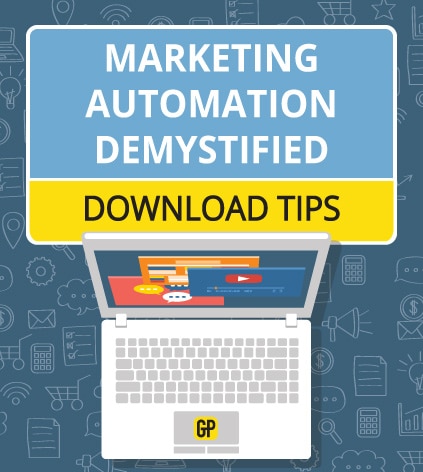Ramp up your business with the top promotion tools for sales and marketing success. Companies developing a marketing mix often focus the most time and effort on promotion. And that makes sense because promotion has the most direct impact on the target market. But product, price, and place also factor into the success rate of a promotional campaign.
This article covers various types of promotional tools, explores which tools prove most effective, and makes a few recommendations about must-have promotional tools. As we limit our discussion to the 4th of the marketing mix’s 4 P’s, we can take a deep dive into that P, or promotion, as a whole by analyzing the best promotion tools used today.
Types of Promotion Tools
Although thousands of individual promotion tools are available to the public, the tools can all fit into one of four categories: Advertising, Sales Promotion, Public Relations, and Direct Marketing. While some specific tools may straddle the lines between two or more of these categories, the vast majority fit squarely within one.
Advertising
All paid promotional messages qualify as advertising. Advertising represents the broadest type of promotional tool and often subsumes the other three categories. For example, a company may pay for a communication that qualifies as a sales promotion because its message informs the target market about current or future discounts.
In any case, advertising breaks down into the 5 M’s: mission, money, message, media, and measurement. Each one of the 5 M’s requires careful consideration when a business is developing an advertising strategy.
Mission
The mission sets various goals or benchmarks that an advertising campaign must meet to achieve success. The goal of a particular piece of advertising may include reinforcing brand awareness, reminding a target market about a product or special offer, persuading customers to buy, or informing the public about the existence of a given product or service.
Money
The money pertains to budgetary considerations and takes into account the business’s market share, customer base, competitors, breadth and length of the advertising campaign, a product’s unique selling proposition, and more. Ultimately, money will decide which channels a business will use for an advertising campaign and for how long.
Message
The development of a message intended for an advertising campaign goes through several steps. First, a company must create the message. Second, the company must evaluate the effectiveness of the message. Third, the company must deliver the message through available channels. And fourth, the company should review the message’s success.
Media
Once a business has solidified a message, it must choose the appropriate media channels. Considerations when selecting media channels include
- Reach of the media channel
- Frequency of the message
- Impact on consumer sentiment and sales
- Timing
Measurement
During an advertising campaign run and soon after its completion, a company should review the campaign’s effectiveness. Specifically, a business should try to determine the campaign’s effect on the marketplace in general, as well as the effect on company revenues.
Sales Promotion
Sales promotion represents another useful tool in the marketer’s toolbox. It incentivizes the consumer to make a purchase through enticing special offers. Examples include free trials, discount codes, coupons, exclusive sales, and rebates.
The main goal of sales promotion is an increase in short-term revenue. But other goals include
- Gaining new customers
- Rewarding existing customers
- Recapturing previous customers
- Poaching competitors’ customers
Public Relations
Public Relations serves as an essential promotion tool. A company that doesn’t interact with its customers quickly dies. But public relations also pertains to the company’s interactions with its employees, public or private stakeholders, and policymakers. A company accomplishes positive public relations through a variety of methods:
- Developing press releases that engage media for positive coverage.
- Garnering publicity through engagement with stakeholders.
- Maintaining and enhancing the company’s image.
- Dealing with legislative and regulatory bodies.
- Consulting with executives regarding matters of public concern.
Direct Marketing
Direct marketing involves getting a company’s message to the consumer without the use of intermediaries. A business can achieve this through direct mailers, organic website traffic, telemarketing, catalogs, and face-to-face interactions within the setting of a brick-and-mortar store.
Traditional vs. Modern Promotion Tools
Since the dawn of the Internet Age, the use of promotion tools has shifted from traditional tools to more modern ones. Old and new promotion tools remain viable, but it behooves all companies to consider using both types.
Traditional Promotion Tools
In the past, traditional mass media outlets served as go-to promotion tools. Businesses would pay various outlets to display the company message:
- Television
- Radio
- Newspapers
- Magazine
- Billboards
- Phonebooks
- In-store displays
Modern Promotional Tools
The internet, smartphones, and other promotion technology have forever altered the landscape of promotion. Companies can now contact customers directly, regardless of whether that customer is sitting in front of the television or driving to work. Modern sales promotion tools also allow for constant contact and frequent interaction. Some of the main modern promotion tools include
- Websites
- Social media
- Blogs
- Live chat
- Data mining
Categories of Modern Promotional Tools
The new arsenal of modern promotional tools breaks down into several categories according to strategy. Some strategies cost nothing to a business. Others require time, effort, and money. Some of the main categories of modern promotion tools include
- Affiliate marketing
- Search engine optimization
- Web analytics
- Content creation
- Programmatic advertising
- Organic and paid social media
- Display retargeting
- Email marketing
The Top Modern Promotional Tools
Businesses can find countless marketing promotion tools to help them develop, execute, and analyze an advertising campaign. Of those tools, some of our favorites include
- Nanigans – Optimize your ads on Facebook, Twitter, and Instagram.
- MailChimp – Enjoy adjustable pricing when executing an email campaign.
- HubSpot Email Marketing – Send 2,000 emails a month for free.
- AdRoll – Retarget your advertising by gaining access to over 500 ad exchanges.
- Vimeo – Post your videos and reach 35 million users.
- Adobe Analytics – View extensive analytics concerning your company website.
- SemRush – Track your search rankings, as well as the rankings of your competitors.
Did we forget to mention your favorite promotion mix tool? Let us know in the comments, and we’ll add it to the list during our next update.
- How to Select a Promotion Agency - July 25, 2021
- Top Promotion Tools for Sales & Marketing Success - July 25, 2021
- Event Promotion – Strategy & Tactics - July 25, 2021









Leave a Reply